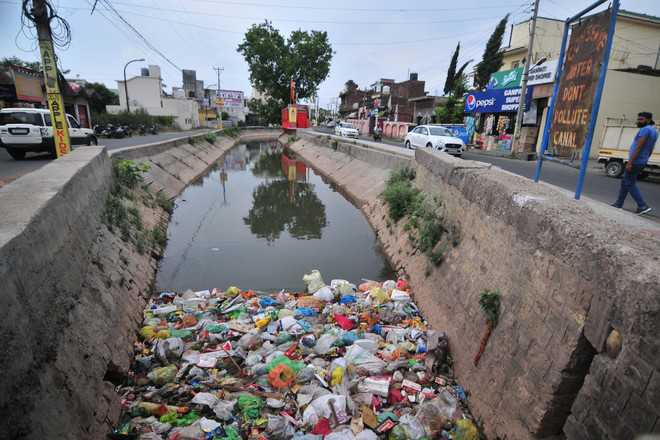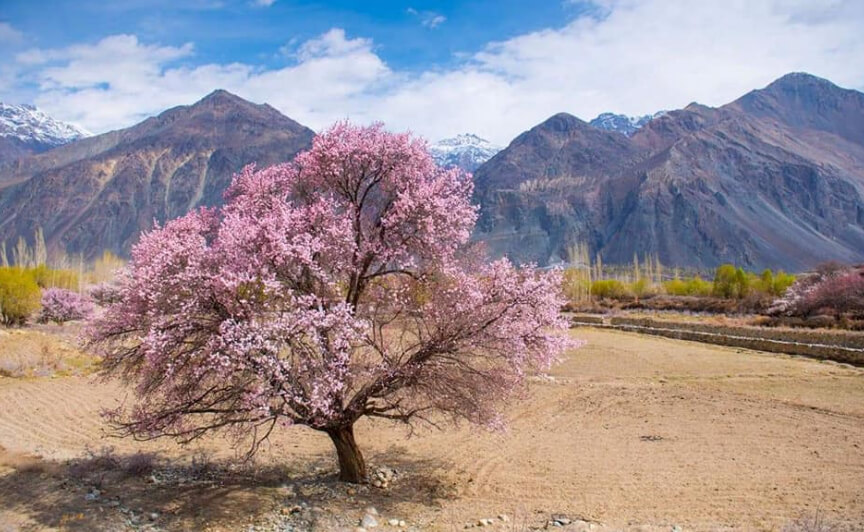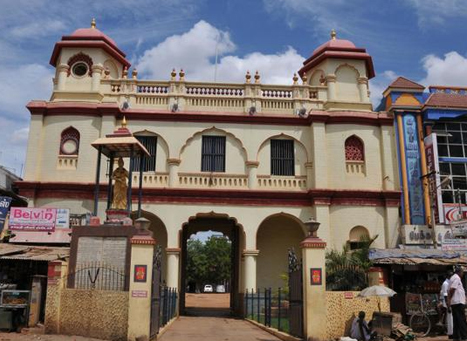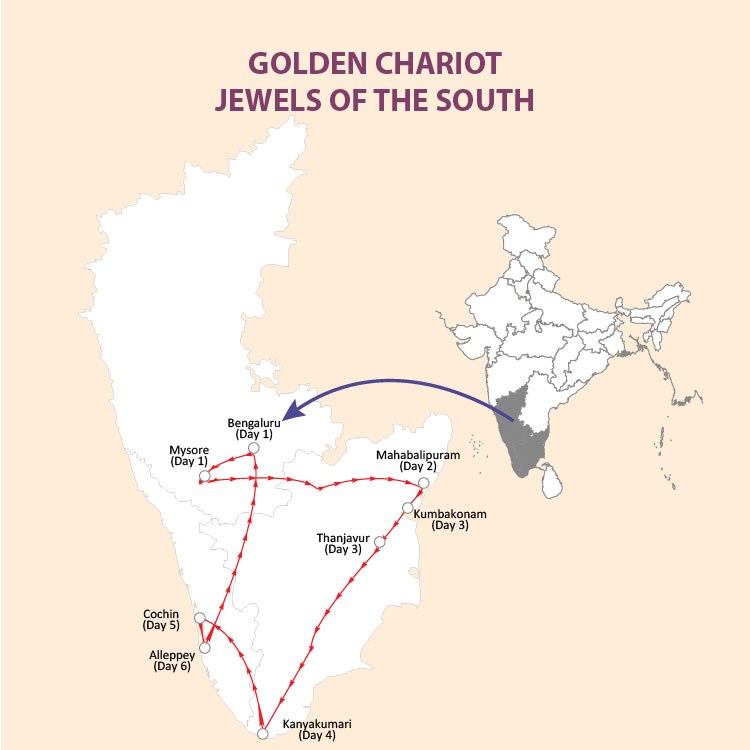Ranbir Canal is a vital waterway in Jammu and Kashmir. It plays a crucial role in irrigation and water management.
Ranbir Canal, named after Maharaja Ranbir Singh, has been serving the region since the early 1900s. This canal is a lifeline for farmers, providing essential water for agriculture. Stretching over 60 kilometers, it transforms arid lands into fertile fields, supporting local communities and boosting the economy.
The canal’s engineering marvel ensures efficient water distribution, making it a cornerstone of regional development. Understanding the significance of Ranbir Canal reveals its impact on the environment and livelihoods. Dive into the history, importance, and future of this remarkable waterway, and discover how it shapes the landscape of Jammu and Kashmir.
Introduction To Ranbir Canal
When you think about the water canals of India, Ranbir Canal might not be the first one that comes to mind. Yet, this lesser-known gem has a rich history and vital role in the region’s agriculture and daily life. Today, we’re diving into the fascinating world of Ranbir Canal. Let’s start with its historical significance and geographical location.
Historical Significance
Ranbir Canal, named after Maharaja Ranbir Singh, was constructed in the late 19th century. Its creation was driven by the need to support the agricultural demands of the area. Before the canal, the region faced severe challenges in irrigation, especially during dry seasons.
Do you ever wonder how people managed irrigation in the past? Ranbir Canal was a game-changer. It turned barren lands into fertile fields, transforming the local economy. The canal enabled farmers to grow crops year-round, reducing dependency on unpredictable monsoons.
Interestingly, the construction of Ranbir Canal also showcases the engineering prowess of that era. When you walk along its banks, you can still see remnants of the original structures. This historical touch adds a layer of charm, making it more than just a waterway.
Geographical Location
Ranbir Canal is situated in the northern state of Jammu and Kashmir. This location is crucial because the canal channels water from the Chenab River, one of the major rivers in India.
Have you ever visited Jammu and Kashmir? If you have, you might recall the lush green fields and vibrant landscapes. Much of this is thanks to Ranbir Canal. It winds through diverse terrains, from hills to plains, providing irrigation to vast areas.
Moreover, the canal’s strategic location enhances its importance. It serves several districts, including Jammu, which is a significant agricultural hub. You can see the impact of Ranbir Canal on local farming practices, with crops like rice, wheat, and vegetables flourishing.
Would you believe that this canal has also become a popular spot for picnics and walks? The serene environment and historical significance make it a favorite among locals and visitors alike. Next time you’re in the area, take a stroll along Ranbir Canal and soak in its beauty and history.
Construction And Design
The Ranbir Canal is a marvel of engineering and architecture. Its construction and design demonstrate human ingenuity and persistence. This section delves into its unique architectural features and the challenges faced during its construction.
Architectural Features
The canal stretches over 60 kilometers. It is an essential water source. Its design includes stone masonry and concrete structures. These materials ensure durability and strength. The canal’s width varies at different points. This variation helps manage water flow efficiently. The canal also features numerous locks. These control the water levels and prevent flooding.
Construction Challenges
Building the Ranbir Canal was no easy task. The terrain posed significant difficulties. Workers had to dig through rocky ground and clay soil. Seasonal rains often halted progress. These rains made the ground unstable. The construction team also faced logistical issues. Transporting materials to remote locations was tough. Despite these challenges, the canal was completed successfully. It stands as a testament to hard work and determination.
Economic Impact
Ranbir Canal boosts the local economy by providing water for agriculture. Farmers depend on it for irrigation, increasing crop yields. This canal significantly supports the region’s agrarian livelihood.
### Economic Impact The Ranbir Canal, nestled in the heart of Jammu and Kashmir, is not just a waterway; it is a lifeline for the region’s economy. By irrigating vast stretches of agricultural land and supporting local businesses, this canal significantly impacts the economic landscape. Let’s delve into how it propels agricultural benefits and boosts the local economy.Agricultural Benefits
The Ranbir Canal has transformed the agricultural sector in the region. Before its construction, farmers depended heavily on unpredictable rain patterns, leading to inconsistent crop yields. Today, the canal ensures a steady supply of water, enabling farmers to cultivate their lands throughout the year. This irrigation facility has led to an increase in crop variety. Farmers now grow multiple crops, including rice, wheat, and vegetables, rather than sticking to just one or two. This diversity not only increases their income but also reduces the risk associated with crop failure. Moreover, the canal has improved the quality of produce. With access to sufficient water, crops are healthier and more abundant, fetching better prices in the market. The ripple effect of this prosperity is evident in the overall development of the farming community. Imagine visiting a local farmer who, thanks to the canal, has been able to educate his children and invest in modern farming equipment. This is the real, tangible impact of the Ranbir Canal on the lives of individuals.Local Economy Boost
The benefits of the Ranbir Canal extend beyond agriculture. The increase in agricultural productivity has led to the growth of related industries such as food processing and packaging. These industries provide employment opportunities, driving economic growth in the region. Small businesses, such as local markets and supply stores, flourish as farmers have more disposable income to spend. This increased economic activity leads to a vibrant local economy, with money circulating within the community. Consider the bustling weekly markets where local vendors sell fresh produce and handmade goods. These markets are teeming with life, a direct result of the economic boost provided by the canal. Furthermore, improved agriculture has attracted investment in infrastructure. Better roads, storage facilities, and transport services have emerged, making the region more connected and accessible. This, in turn, encourages more business ventures and tourism, creating a cycle of growth and prosperity. How can your community harness similar water resources to boost its economy? The story of the Ranbir Canal shows that well-planned irrigation projects can be game-changers. They can lift entire regions out of economic stagnation, leading to sustainable development and improved quality of life. The Ranbir Canal is a testament to how infrastructure can transform an economy. By ensuring reliable water supply, it not only supports agriculture but also fuels broader economic growth. Its impact on the local community is profound and enduring, setting a precedent for other regions to follow.
Credit: jammuvirasat.com
Environmental Influence
The Ranbir Canal is not just an engineering marvel; it is a lifeline for the regions it traverses. Its environmental influence is profound, impacting local biodiversity, water management, and even the lives of people who live nearby. Understanding its role can help us appreciate its value and encourage efforts to protect and enhance its benefits.
Biodiversity Support
Ranbir Canal supports a rich tapestry of life. The diverse flora and fauna thrive along its banks, creating a vibrant ecosystem. Have you ever walked along the canal and noticed the variety of birds? It’s a haven for species like the Kingfisher and the Indian Roller. These birds are often seen diving for fish, contributing to a balanced ecosystem.
The canal also aids in maintaining the health of the soil. The regular flow of water prevents soil erosion and promotes the growth of vegetation. This greenery not only beautifies the area but also provides habitat and food for numerous animals.
Water Management
Efficient water management is another critical role of the Ranbir Canal. It serves as a vital source of irrigation for the surrounding agricultural lands. This ensures that crops receive the necessary hydration, leading to bountiful harvests and food security for the region.
Have you ever wondered how water scarcity is tackled in these areas? The canal helps manage water distribution during dry seasons, ensuring that even during droughts, there is a steady supply. Farmers rely heavily on this water for their livelihoods, making the canal an indispensable resource.
Moreover, the canal plays a significant role in groundwater recharge. As water seeps into the soil, it replenishes the underground aquifers. This is crucial for maintaining the water table levels, which in turn supports wells and other water sources used by local communities.
The environmental influence of the Ranbir Canal is a testament to how natural and human-engineered systems can coexist and support each other. Next time you visit, take a moment to appreciate its contributions. How can you contribute to preserving such vital resources in your community?
Cultural Importance
Ranbir Canal, a marvel of engineering in Jammu and Kashmir, is not just a lifeline for agriculture but also a cultural treasure trove. Its waters have nurtured the land and its people for generations, creating a rich tapestry of traditions, festivals, and community activities that continue to thrive around its banks.
Local Traditions
In the villages surrounding Ranbir Canal, traditions run deep. If you wander through these areas, you will notice the unique way of life that has been shaped by the canal. Local farmers, for instance, have developed specific agricultural practices that are closely tied to the seasonal flow of the canal.
Water from the canal is considered sacred and is often used in religious rituals. It’s common to see families collecting canal water for use in ceremonies and blessings. Have you ever thought about how water sources can shape cultural practices? Here, it is a living testament to that idea.
Festivals And Celebrations
Festivals along Ranbir Canal are a sight to behold. The canal becomes the heart of celebrations, particularly during harvest festivals. The Baisakhi festival, for instance, is celebrated with great enthusiasm. The entire community gathers to thank the canal for its life-giving waters, making it a vibrant and joyful occasion.
During these festivals, the canal banks are adorned with lights and decorations. Traditional music and dance performances are a common sight, creating an atmosphere of joy and unity. Have you ever experienced the magic of a community coming together to celebrate? It’s an experience you wouldn’t want to miss.
So, next time you are near Ranbir Canal, take a moment to appreciate its cultural significance. It’s more than just a waterway; it’s a cornerstone of local heritage, shaping the lives and traditions of the people who live there. Perhaps, you might find a piece of your own story in its flowing waters.

Credit: www.youtube.com
Tourism And Recreation
The Ranbir Canal offers a beautiful getaway for tourists and locals. Its serene environment makes it ideal for recreation and relaxation. People visit to enjoy its natural beauty, boating, and picnic spots.
Major Attractions
The canal is surrounded by lush green landscapes. These provide a perfect setting for nature walks. The nearby parks are well-maintained and offer playgrounds for children. Boating on the canal is a favorite activity, offering stunning views of the water and surroundings.
Fishing is another popular pastime. The canal is home to various fish species, attracting anglers from far and wide. Birdwatchers also find the canal area delightful, with many bird species to observe.
Visitor Experience
Visitors often praise the peaceful atmosphere of the Ranbir Canal. The clean and clear water adds to the charm. Picnic spots along the canal are perfect for families and groups. They can enjoy a meal together while soaking in the scenic beauty.
Safety measures are in place to ensure a pleasant visit. Lifeguards are stationed at popular boating points. Clear signage helps visitors navigate the area easily. Local vendors offer snacks and refreshments, enhancing the overall experience.
Many visitors leave with fond memories and a desire to return. The combination of natural beauty and recreational activities makes the Ranbir Canal a must-visit destination.
Challenges And Preservation
The Ranbir Canal, a vital waterway, faces various challenges today. These issues threaten its existence and efficiency. Preserving this canal is crucial for the local ecosystem and communities. Let’s explore the main challenges and efforts to preserve this historic canal.
Maintenance Issues
Maintaining the Ranbir Canal is a complex task. Over time, sediment accumulates, reducing water flow. Regular cleaning is essential to keep the canal functional. Uncontrolled vegetation growth also poses a significant problem. Plants can obstruct water flow and damage the canal structure.
Moreover, aging infrastructure contributes to the canal’s woes. Many parts of the canal need urgent repairs. Neglecting these repairs can lead to severe damage. Efficient maintenance is key to preserving the canal’s integrity.
Conservation Efforts
Efforts to conserve the Ranbir Canal are ongoing. Government and local bodies collaborate to implement preservation strategies. Cleaning drives are organized to remove sediment and debris. These drives help restore the canal’s water flow capacity.
Educational programs raise awareness about the canal’s importance. Locals learn how to protect and maintain this vital resource. Community involvement is critical in these conservation efforts. People’s participation ensures the sustainability of preservation activities.
Technological advancements play a role too. Modern equipment helps in efficient canal maintenance. Smart monitoring systems detect issues early, allowing for prompt action. Conservation efforts aim to secure the canal’s future for generations to come.
Future Prospects
The Ranbir Canal, a vital waterway in the Jammu region, has been serving the irrigation needs of the area for decades. As we look forward, it’s exciting to consider the future prospects of this significant canal. This section will delve into the development plans and sustainable practices that will shape its future.
Development Plans
Development plans for the Ranbir Canal are ambitious and aim to modernize the infrastructure to meet contemporary needs. One of the key initiatives is the renovation of the canal’s lining to prevent water seepage. This will enhance the efficiency of water delivery to the fields.
Additionally, there are plans to integrate smart irrigation systems. These will use sensors and weather data to optimize water usage. Imagine a system that waters crops only when necessary, saving water and improving yields. This is not just a dream; it’s on the horizon for the Ranbir Canal.
There are also proposals to develop recreational areas along the canal. This could transform the canal into a community hub where families can spend time together. Picture yourself walking along a tree-lined path, with the canal flowing beside you, a perfect blend of utility and leisure.
Sustainable Practices
Sustainability is at the core of future plans for the Ranbir Canal. Efforts are being made to adopt water-conserving agricultural practices. Techniques such as drip irrigation and rainwater harvesting are being promoted among farmers. These methods can significantly reduce water usage while maintaining crop yields.
Furthermore, there are initiatives to plant trees along the canal. This not only helps in preventing soil erosion but also enhances the local ecosystem. Trees provide shade, improve air quality, and can even boost the morale of the local community. Have you ever experienced the tranquility of sitting under a tree by a waterway? It’s a simple joy that can have profound effects.
Another sustainable practice is the use of solar-powered pumps for irrigation. These pumps reduce reliance on fossil fuels and cut down on greenhouse gas emissions. They are cost-effective in the long run and represent a step towards a greener future.
The future of the Ranbir Canal is bright, filled with plans that promise to improve efficiency and sustainability. What are your thoughts on these initiatives? How do you see these changes impacting the local community and the environment? Your perspective is invaluable as we consider the path forward for this vital waterway.

Credit: www.tribuneindia.com
Frequently Asked Questions
What Is The Ranbir Canal System?
The Ranbir Canal system is a vital irrigation network in Jammu and Kashmir. It supplies water from the Chenab River to agricultural fields.
Where Is Pratap Canal Located?
Pratap Canal is located in Jammu and Kashmir, India. It plays a crucial role in irrigation.
Which Is The Oldest Canal Of Kashmir?
The oldest canal in Kashmir is the Shahkul canal. It was constructed during the reign of Sultan Zain-ul-Abidin in the 15th century.
How Long Is Ranbir Canal?
Ranbir Canal is 60 miles (97 kilometers) long. It is located in the Jammu region of India. The canal plays a crucial role in irrigation.
Conclusion
Ranbir Canal is a vital lifeline for irrigation in northern India. It supports agriculture, ensuring farmers’ crops thrive. Visitors can enjoy scenic views and local culture around the canal. Its historical importance and modern utility make it a key asset.
Protecting and maintaining Ranbir Canal is crucial for future generations. Discovering its beauty and function can be a rewarding experience. Keep exploring and appreciating such natural treasures.
{ “@context”: “https://schema.org”, “@type”: “FAQPage”, “mainEntity”: [ { “@type”: “Question”, “name”: “What is the Ranbir Canal system?”, “acceptedAnswer”: { “@type”: “Answer”, “text”: “The Ranbir Canal system is a vital irrigation network in Jammu and Kashmir. It supplies water from the Chenab River to agricultural fields.” } } , { “@type”: “Question”, “name”: “Where is Pratap canal located?”, “acceptedAnswer”: { “@type”: “Answer”, “text”: “Pratap Canal is located in Jammu and Kashmir, India. It plays a crucial role in irrigation.” } } , { “@type”: “Question”, “name”: “Which is the oldest canal of Kashmir?”, “acceptedAnswer”: { “@type”: “Answer”, “text”: “The oldest canal in Kashmir is the Shahkul canal. It was constructed during the reign of Sultan Zain-ul-Abidin in the 15th century.” } } , { “@type”: “Question”, “name”: “How long is Ranbir Canal?”, “acceptedAnswer”: { “@type”: “Answer”, “text”: “Ranbir Canal is 60 miles (97 kilometers) long. It is located in the Jammu region of India. The canal plays a crucial role in irrigation.” } } ] }




